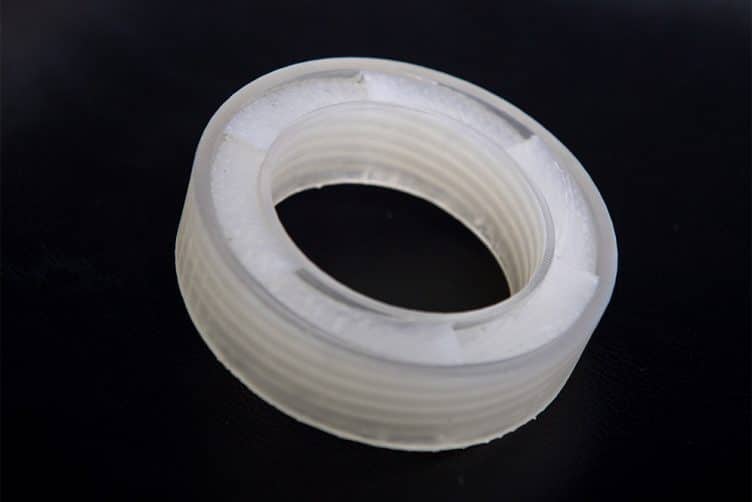We live in a loud world. Every moment of our day is likely filled with some sort of sound — some pleasant, some that fade into the background, and some that assaults our ears like a tone-deaf bagpiper playing Bad Romance.
What if you could mute all these sounds?
A pair of Mechanical Engineers at Boston University asking this question.
Today’s sound barriers are literally thick heavy walls,” says Reza Ghaffarivardavagh. Although noise-mitigating barricades, called sound baffles, can help drown out the whoosh of rush hour traffic or contain the symphony of music within concert hall walls, they are a clunky approach not well suited to situations where airflow is also critical. Imagine barricading a jet engine’s exhaust vent—the plane would never leave the ground. Instead, workers on the tarmac wear earplugs to protect their hearing from the deafening roar.
Recently, they (engineers) stuck a loudspeaker into one end of a PVC pipe. They cranked it up loud and heard nothing.

Yeah, they literally silence the sound. The pipe was actually left open save for a small, 3D-printed ring placed around the rim. That ring cut 94% of the sound blasting from the speaker, enough to make it inaudible to the human ear.
Dubbed an “acoustic meta-material,” the ring was printed from a mathematically modeled design, shaped in such a way that it can catch certain frequencies passing through the air and reflect them back toward their source. Typical acoustic paneling works differently, absorbing sound and turning the vibrations into heat. But what’s particularly trippy is that this muffler is completely open. Air and light can travel through it–but sound cannot.
The metamaterial, ringing around the internal perimeter of the pipe’s mouth, worked like a mute button incarnate until the moment when engineers reached down and pulled it free. The lab suddenly echoed with the screeching of the loudspeaker’s tune.
Jacob Nikolajczyk, who in addition to being a study co-author and former undergraduate researcher in Zhang’s lab is a passionate vocal performer said, “The moment we first placed and removed the silencer…was literally night and day. We had been seeing these sorts of results in our computer modeling for months—but it is one thing to see modeled sound pressure levels on a computer, and another to hear its impact yourself.”
By comparing sound levels with and without the metamaterial fastened in place, the team found that they could silence nearly all—94 percent to be exact—of the noise, making the sounds emanating from the loudspeaker imperceptible to the human ear.
The implications for architecture and interior design are remarkable because these metamaterials could be applied to the built environment in many different ways. For instance, they could be stacked to build soundproof yet transparent walls. Cubicles will never be the same.
The researchers also believe that HVAC systems could be fitted with these silencers, and drones could have their turbines muted with such rings.
Ghaffarivardavagh said, “Our structure is super lightweight, open, and beautiful. Each piece could be used as a tile or brick to scale up and build a sound-canceling, permeable wall.”
“The shape of acoustic-silencing metamaterials, based on their method, is also completely customizable. The outer part doesn’t need to be around ring shape in order to function.”
“We can design the outer shape as a cube or hexagon, anything really. When we want to create a wall, we will go to a hexagonal shape” that can fit together like an open-air honeycomb structure.”
Xin Zhang, a multidisciplinary professor at the College of Engineering and the Photonics Center and co-author of the study said, “Such walls could help contain many types of noises. Even those from the intense vibrations of an MRI machine.”
“The possibilities are endless since the noise mitigation method can be customized to suit nearly any environment: The idea is that we can now mathematically design an object that can block the sounds of anything.”
The study is published in the journal Physical Review.
